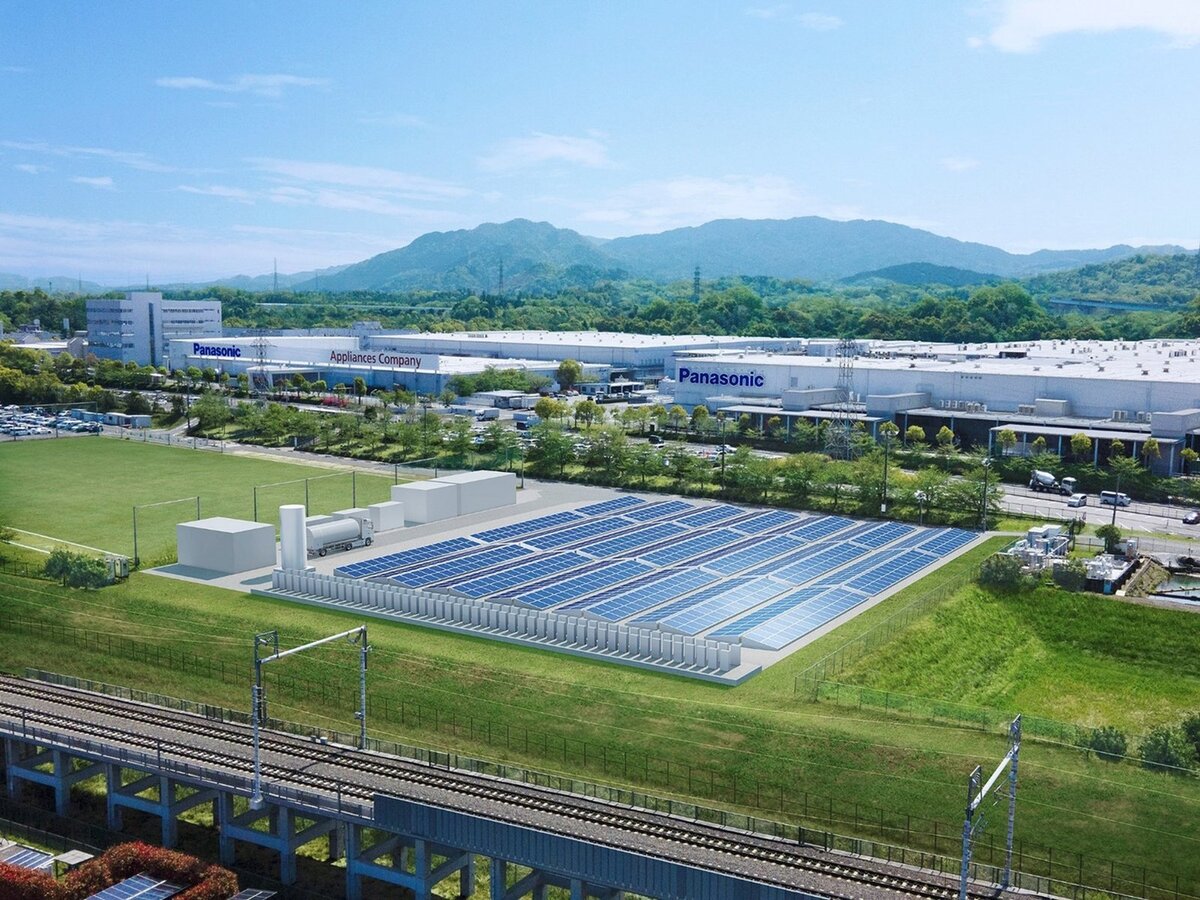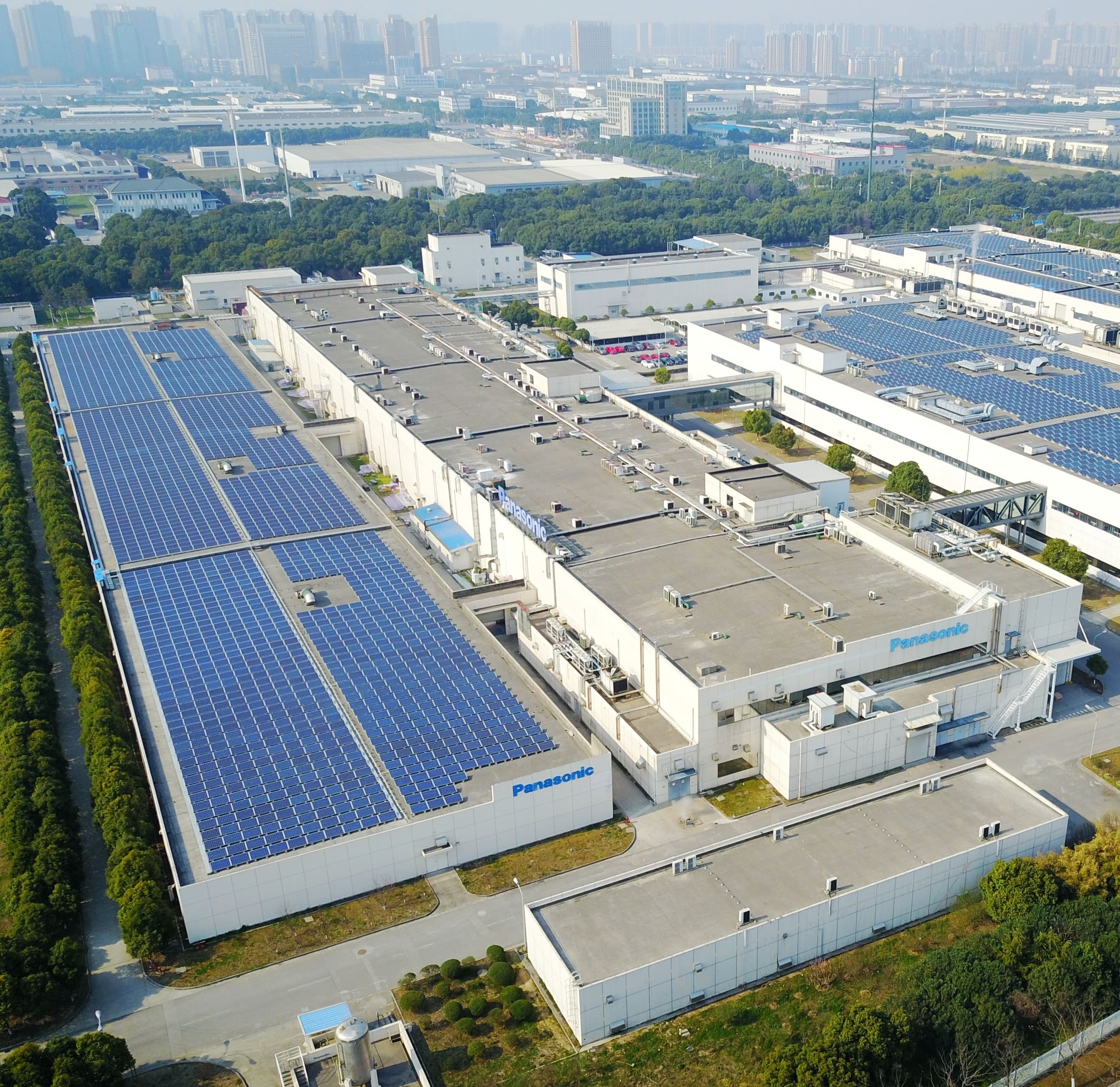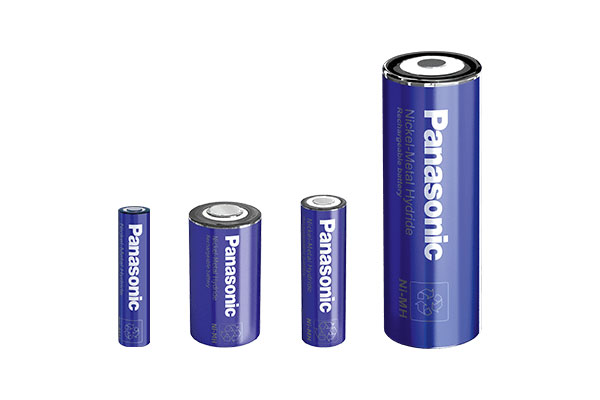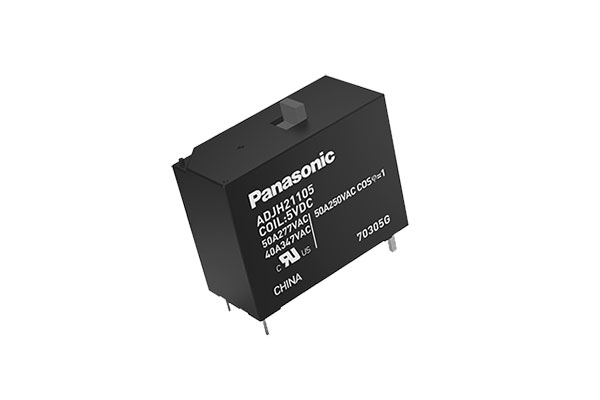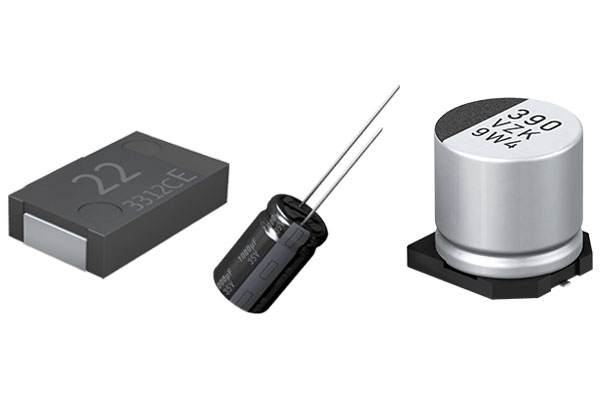
Made with a GREEN IMPACT
We take on the challenge of producing sustainable products, sustainably.
At Panasonic, we commit to significantly reducing our carbon footprint, striving to achieve fully decarbonized emissions across our operations by 2050. This is the foundational pillar of Panasonic’s GREEN IMPACT initiative. The second pillar revolves around empowering society already now to avoid emissions through the widespread deployment of our existing and upcoming technologies to customers globally. Together, we are forging a path towards a sustainable future.
To achieve our ambitious objective, we are working to realize decarbonized emissions at own sites in all our operating companies. In 2021, a remarkable transformation took place as a total of 7 production sites across our global network were proudly classified as 'zero-CO2' factories. Even more encouraging is the rapid pace at which progress is being made. By now the number of ‘zero-CO2’ factories has increased to 31. Looking ahead to 2024, just one short year from now, Panasonic projects a total of 37 out of approximately 250 factories worldwide will bear the 'zero-CO2' label. This rapid expansion of our environmentally-friendly facilities underscores our determination to significantly reduce in-house carbon emissions, ultimately leading to the complete decarbonization of all our factories by 2030.
*The Panasonic Group's ‘zero-CO2‘ factories means realizing ‘zero-CO2‘ emissions from factory production worldwide. This will be attained by promoting our conventional energy-saving activities (e.g., using LED lighting), advanced energy-saving technologies, such as Factory Energy Management System (FEMS), productivity improvement, and innovative manufacturing. Other means include a combination of the following efforts: promoting renewable energy usage, such as by adopting photovoltaic power systems, energy storage modules, and hydrogen fuel cells; procuring 100% renewable energy-sourced electricity; and obtaining environmental values.
Achieving sustainability one component at a time
The objective to reduce our carbon emissions includes not only the expansion of ‘zero-CO2’ factories. Panasonic Industry provides products that are essential building blocks in the joint effort to reduce energy consumption and waste in today's world. Dive into a selection of our products, that are either being produced in ‘zero-CO2’ factories and/or enable our customers to develop sustainable solutions.
Ni-MH Secondary Batteries: Energy Storage for tough Environments
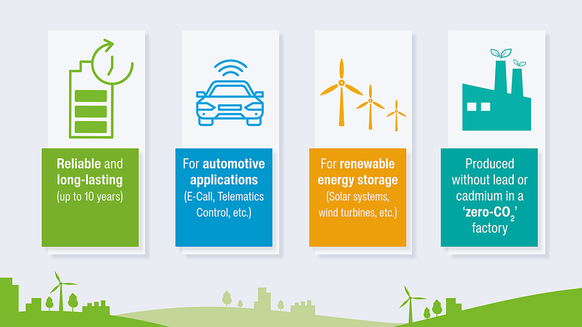
Harness the power of innovation with our reliable Nickel Metal Hydride secondary batteries. Designed to store energy efficiently and sustainably, they play a pivotal role in powering our rapidly evolving world.
For automotive applications like E-Call or Telematics Control (TCU) or renewable energy storage like solar systems and wind turbines, our secondary batteries are the go-to choice for reliability and long-lasting performance of up to 10 years.
Produced without lead or cadmium in a ‘zero-CO2’ factory in Wuxi, China, our Nickel Metal Hydride batteries remain your sustainable energy storage solution.
Innovative Relays: Switch to Higher Efficiency, Safety, and Sustainability
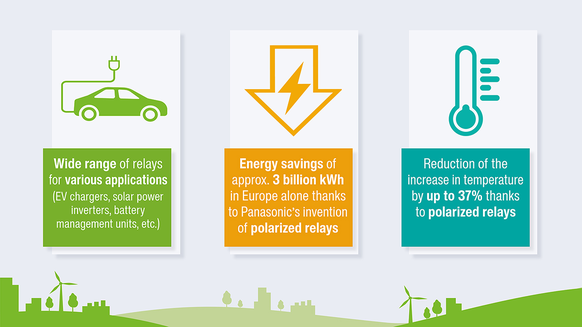
For decades, Panasonic Industry has been at the forefront of the relay industry, and consistently led the way with innovations that not only meet industry needs but also contributed “switching-wise” towards a more sustainable future.
Our wide range of relays is indispensable in applications like wall boxes and chargers for EVs, inverters for solar power plants or as safety components for battery management units in hybrid and electric vehicles.
For instance, Panasonic invented the energy-saving polarized relay, that uses less energy to switch and has saved an estimated 3 billion kWh of energy in industrial and household applications in Europe alone.
A tangible example of how a small component can make a big difference to the environment. Already today.
Reliable PCB Materials: Laying the Foundation for Progress

The basis - literally - of almost every electronic device is the Printed Circuit Board (PCB), and our MEGTRON material enables reliable PCB construction. MEGTRON PCB material is produced in a de-carbonised factory in China (Guangzhou)* and also in Japan, Taiwan and Europe (Austria). This enables a short supply chain, reducing the carbon footprint of each device developed using it. As technology races forward, count on our materials to reduce the carbon footprint of your product.
* With the installation of a solar power generation system, the Guangzhou factory is expected to generate a total of 3.4 MW of electricity, or approximately 3.6 million kWh per year, and reduce CO2 emissions by approximately 2,200 tons.
Hybrid and Film Capacitors: Stability and Efficiency for sustainable Products
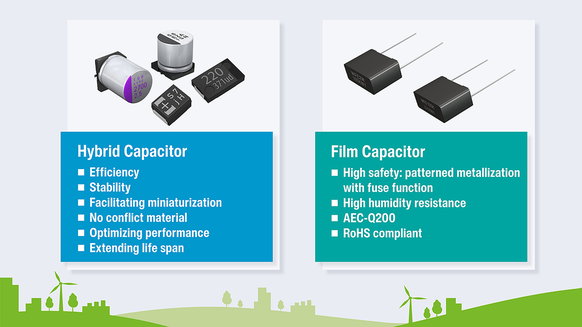
Efficiency and stability are the cornerstones of modern electronics, and our capacitors are the secret ingredient to achieving both.
These powerful components store and release energy precisely when needed, optimizing performance, and extending the lifespan of electronic devices. Panasonic’s hybrid capacitors are ready for a new generation of miniaturized and long-lasting products, and often provide an alternative to conventional capacitors that rely on conflict materials.
The range of film capacitors stands out with unrivaled durability, even under very harsh operating conditions such as high temperature or humidity. That makes them a proven and reliable choice for taking the electrification of mobility, charging, or outdoor applications to the next level. And beyond the capabilities, our film capacitors are manufactured sustainably in the 'zero-CO2' factory premises in Jiangmen (China)*.
So, from EVs over household appliances to advanced communication technology, our capacitors play a vital role in shaping a more connected and energy-efficient world.
*The company installed a 3.94 MW photovoltaic system in 2022, followed by a range of energy-saving facilities in 2023, including a highly efficient air conditioning system and inverter water circulation pumps.
Join Us in Building a Better Future
Together, we are the driving force that is responding to the needs of today's world. Embrace the power of innovation and choose Panasonic Industry components for a brighter, sustainable future. Join us on this transformative journey as we create a world that thrives on cutting-edge, sustainable solutions.
Get in contact with us to learn about our comprehensive product portfolio
Examples of sustainable productions sites at Panasonic

